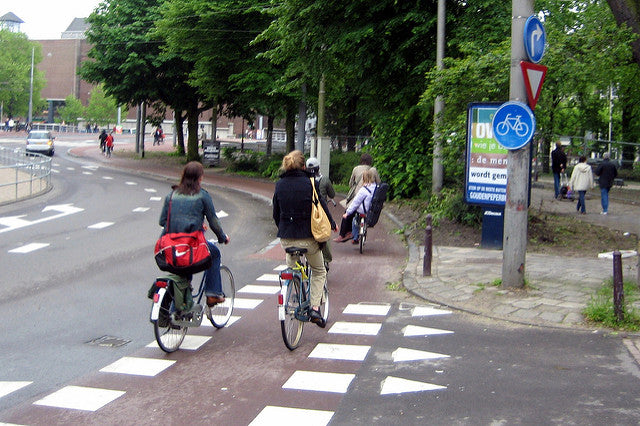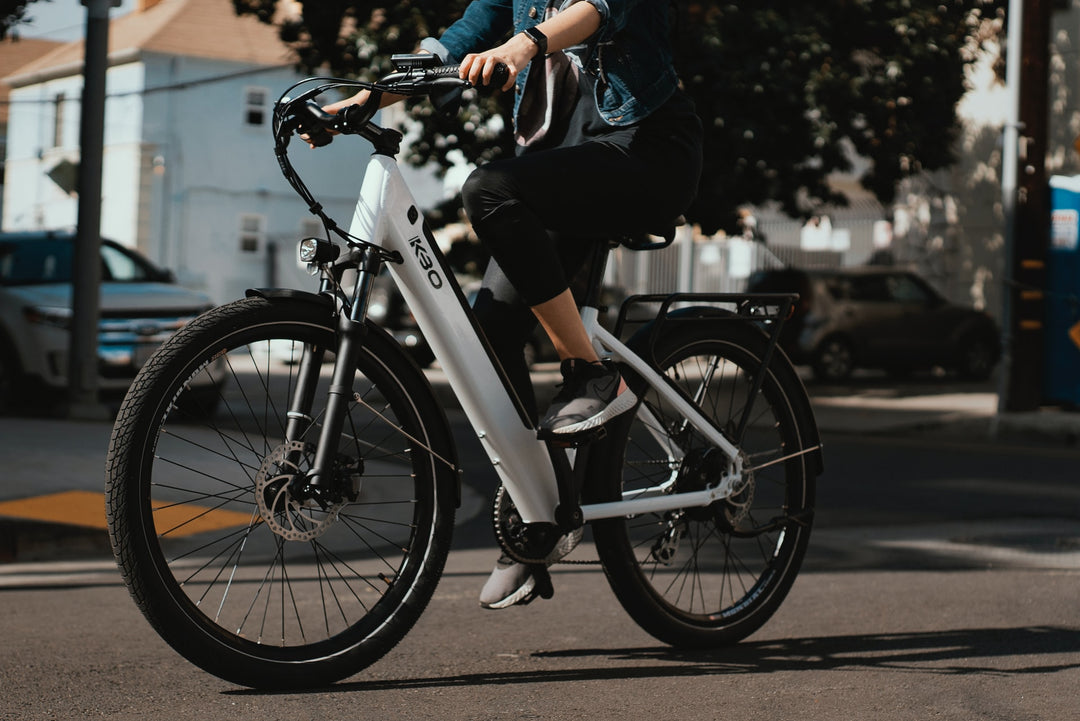Differences between Amsterdam and London cycling culture
Amsterdam has had the reputation of being one of the leading cities for cycling for a long time. If you visit the city, you’ll find cyclists everwhere - from mothers to police officers, young people to old people, seemingly everyone happily rides a bike.

In fact, 2017 figures revealed that 68% of traffic to and from work or school was made by bike, and cycling accounts for 36% of all traffic in Amsterdam. Here are some other facts:
- Amsterdam is ranked as the most bicycle-friendly city in the World.
- In 2011 and 2013, Amsterdam was ranked as the world’s most bicycle-friendly city in the bi-annual Copenhagenize Index. In 2017, Amsterdam was ranked third, behind Copenhagen and Utrecht.
- London was not on the latest Index and has only appeared once in 2011, placed sixteenth.
- Amsterdam has 767 kilometres of bicycle paths and lanes, 513 kilometres of which are bike paths completely separated from other traffic.
Impressive figures.
What is London like, by comparison?
In contrast, London has been playing the catchup game for a long time now and, culturally, the differences between the two capital cities remain vast.
As a daily London commuter and without having done a PHD on the topic, here are my observations on the cultural differences, as well as my theory on the underlying reason(s):
- London cyclists tend to ride much faster than Amsterdam cyclists. Reason - there are less segregated cycle lanes, meaning cyclists are often sharing the road with cars, forming a culture where the bicycle is treated as another road vehicle

- In London, it seems a larger proportion of cyclists are enthusiasts (sometimes known as the ‘lycra clan’), i.e. they treat cycling as a sporting hobby. Reason - because the infrastructure is less developed, it tends to attract those who are not afraid to ride on the open roads, and those tend to be people who have taken up road cycling as a hobby and have built confidence through joining cycling clubs, etc.

- London cyclists seem to use fancier, more expensive bikes than their Amsterdam counterparts. Reason - this can be partly explained by the above 2 reasons, as enthusiasts and road users are more likely to use dedicated road bikes. Another reason is that the Dutch tend to regard the bicycle as the extension of their two legs, simply as a means of getting from A to B. Whereas in London, the bicycle is seen as more than a transportation tool. It is also a fitness device, a piece of tech and for some their ‘pride and joy’.

- Londoners appear to (I don’t have the facts to back this up) cycle longer distances than their Dutch counterparts. Reason - astronomical property prices and lack of amenities (schools, hospitals, local shops) in the centre of the city has driven typical residents to at least zone 2, with a substantial number of people commuting into the city from zones 3 and 4.
- London’s best cycling infrastructure appears to be primarily used for city commuting, rather than for the whole community in an inclusive manner. It is not uncommon to see cycling lane traffic jams between 8-9am and 5-6pm, only to seem those same lanes completely empty in other times of the day. Reason - cycling infrastructure projects are only funded if there is a ‘business case’, not as part of an overall strategy to increase access to cycling for the community generally.

I have admit I’m a product of the culture myself. I love cycling both as a form of commute and as a hobby, and I’ve built my nerves to ride on open roads after years of fighting my fears. I’ve grown accustomed to cycling specific gear and I treat my road bike like a close friend.
Whilst not all bad, the culture that has been built up in London has led to a number of side effects. Cycling in London can be a more stressful experience as one needs to constantly negotiate larger vehicles, some of whom can get angry and impatient at having to share roads with slower vehicles.
The ad-hoc infrastructure has led to many cyclists mixing up their attitude between seeing themselves as a road vehicle, and as an user of special cycling infrastructure. This can lead to instances of running red lights, for example, which annoy both drivers and cyclists alike.
The use of expensive bikes on London’s roads has led to problems with crime, with professional thieves who focus their times on stealing bikes and reselling them, often overseas. One never feels safe with their bike locked away in London, no matter how heavy duty the locks are.
However, probably the biggest side effect is that the combination of the above factors has put off more people to get into cycling, either because they are afraid (because they think it’s dangerous), or they don’t think they fit into the mould of a typical London cyclist, whatever that means.
Unfortunately, the outlook for cycling in London is best described as uncertain. Sadiq Khan, London’s Mayor, has underspent on cycling initiatives by £142 million, and plans to improve London’s cycling infrastructure are hampered by unrealistic ideas such as Lord Foster’s SkyCycle dream.
So what could change this? Or are to to accept this for what it is?
Amsterdam’s cycling culture is shaped by an overall strategy with commitment to invest
If anything can be learnt from Amsterdam, it is that they had an overall city wide strategy to increase ridership, to be inclusive, and to drive down the number of vehicles in the city. All of this takes political will and a visionary (or a few) to drive through.
It built a comprehensive network of infrastructure geared towards cycling, across the city, in an egalitarian manner. This inclusive network of infrastructure has made cycling the most logical form of transportation in Amsterdam for anybody, including children, the elderly, even pregnant mothers.

Over time, the cycling culture has become so ingrained in Dutch culture that they often don’t wear helmets or cycling lycra. Normal people cycle every day in every-day clothing.
How can London’s cycling culture catch up?
As we have shown, cycling in London has progressed, there is still a long way to go to compete with the most cycle-friendly cities in the world.
It is clear that additional investment in high-quality cycling infrastructure is needed to reverse the culture and to create a safe, inclusive cycling network that will encourage cyclists of all ages and abilities to get on a bike, plus an emphasis on encouraging more people to take up cycling as a form of transport.
That is what we are all fighting for in London and I hope one day we will get there.
Cover photo credit: FaceMePls



